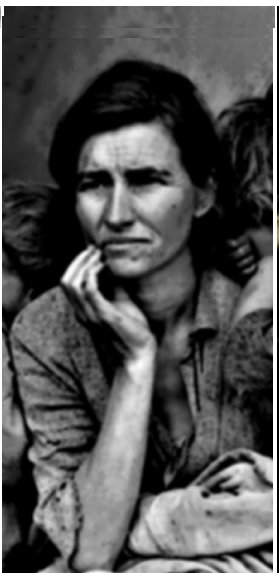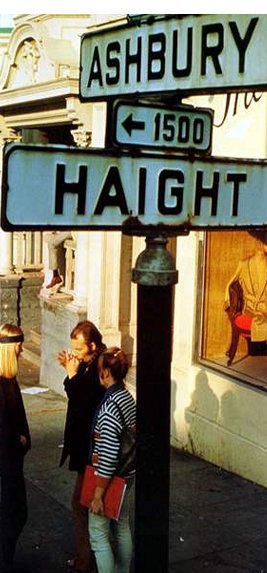The Need to Survive Josh Kessler
Born on September 3,
1940, Kevin Starr is an American historian who is best-known for
his multi-volume series on the history of California.
He received his B.A. from the University
of San Francisco in 1962 and a
doctorate from Harvard University
in 1969 in American Literature, and he has served as California
State Librarian from 1994 to 2004.
Currently, Starr is a Professor of History at the University
of Southern California.
Patricia Hearst, of the affluent
Hearst family, was born in San Francisco, California
in 1954. When Patty, the nickname most of Patricia¡¦s friends referred to her
as, was a child she moved into the Hearst
Mansion, located on the coast of California.
Patty¡¦s father, Randolph Apperson Hearst, achieved his
wealth through the privately owned Hearst Corporation. The Hearst Corporation
had many different assets; they owned a chain of newspapers and had several
radio stations. Because of the families extreme wealth she lived a very
sheltered life. Her mother always feared that someone would ¡§drag [Patty] into
[their] car, and kidnap¡¨ her because of how much wealth the Hearst family had
accumulated.1 Ironically, at the age of
nineteen, Patty was kidnapped from her apartment by a terrorist organization.
Patty was kidnapped in Berkley,
California while was enrolled at the University
of California at Berkley.
California was kidnapped by a
terrorist organization based in nearby San Francisco.
The terrorist organization was called the Symbionese
Liberation Army (SLA). The SLA was a radical group; they
preferred taking action as opposed to merely speaking about the problems in the
American society. In letters to the press the SLA always
spelled America
with three k¡¦s, because they believed that the
¡§fascist Amerikkkan¡¨ government was racist against
all the African American population of the United States.2
On February 4th, 1974, Patty was kidnapped from
her calm apartment in Berkley. At
the time, she was living with her boyfriend, Steven Weed, whom she was engaged
to and had been engaged for a couple weeks. The SLA members broke into the
apartment at around 6:00 P.M. and took Patty at gunpoint, continuously
screaming ¡§where¡¦s the safe where¡¦s the safe,¡¨ trying
to make the kidnapping look like a robbery that had gone wrong.3
This beginning section of the book is written in a short, burst-like, manner
clearly resembling the abrupt SLA kidnapping. It is
clear through Heart¡¦s writing style the SLA kidnapped
dramatically, as if the SLA was trying to prove its
legitimacy to the country by kidnapping a wealthy white woman.
The novel
continues in a harsher and wilder writing structure, with some long and
descript sentences and some shorter sentences that just get to the point. This
fragmented writing style shows how Patty¡¦s mind was changing from a normal
teenage girl to having the fighting need to survive no matter what it would
take. Patty¡¦s need to survive began building up in Patty during the first month
with the SLA. She was under constant surveillance, given
no privacy at all. Patty was also completely blindfolded for the first month of
her captivity all day and all night long. Finally, Patty joined the SLA because
she knew it ¡§would be better than getting killed¡¨ and that the SLA would never
release her because they continued to ask for more and more money as a ransom
for her release from captivity.4 From that point forward Patty was a
member of the SLA and was given the name of Tania, a Swahili name, so that
nobody would hear them call her by her official name. She had made the ultimate
sacrifice of joining the group that had kidnapped her in order to stay alive.
The plot thickens when the San
Francisco police department and the F.B.I get closer
and closer to discovering where the SLA are located. The SLA have to constantly be on the run, going from city to city to
find new safe houses for them to hide out in. The SLA
traveled from Daly City, through Sacramento,
Los Angeles, Anaheim,
and Costa Mesa and finally back to San
Francisco all in a matter of a few years. Hearst¡¦s
writing style again changes in this third section of the novel; the pace is
slowed and is less descriptive then in the first half. This calming sense of
writing mirrors the slowly dying SLA group. The SLA
know the end is near for there are police everywhere
in search of them. The SLA decides to split itself into
two separate units. The police killed five of the SLA
members in a final shootout at a safe house in San
Francisco. Patty and the others knew ¡§it was all over¡¨
because one of the men who was killed was the leader of the SLA, known to them
as Cin was killed.5 At the time Patty was
in hiding in Anaheim near Disneyland, leaving merely three members of the SLA
still on the run and to represent the cause of this terrorist organization.
The story of Patty Hearst concludes
with the final three members of the SLA, including
Patty, driving cross-country to hide from the police in a farm in Pennsylvania.
Again Hearst¡¦s writing style changes to a short and blunt sentence structuring.
It is clear that the group will be found soon simply by looking at the newly
developed writing structure. Shortly after the group gets to Pennsylvania the
police crash through the farm door and Patty goes ¡§towards [the officer] and
raises her hands] because she knows her days of captivity have come to an
abrupt end.6 Patty calmly obeys all orders given to her by police at
her arrest and is lead to the nearest police station.
The last three chapter of the novel
deal with the media crazed trial of Patty. She explains how even in the courtroom
the press faces the jury members; Patty felt the overbearing presence of the
media distorting the truth of what her activity in the SLA
had actually been. Hearst goes back to her descript and dramatic writing style
to explain the trial process in detail, showing the reader a glimmer of hope at
the end of a long and dark tunnel. Sadly, the jury finds Patty guilty of having
been involved in the SLA and she is sentenced to prison.
After two years of fund raising to get Patty out of prison the President of the
United States,
Jimmy Carter, himself pardons Patty. Naturally, she was overjoyed that after a
lengthy five years with this violent group she was free. When leaving the
prison she walked up to the cameras raised Jimmy Carter¡¦s pardon in her hands
and yelled ¡§here it is, the commutation¡¨ because she was finally her own person
once again and wanted the world to know she was back to being Patricia Hearst.7
Patty Hearst wrote her side of the
story of her kidnapping to show the world how a person can literally become
brainwashed when put through a difficult situation. And how a normal upper
class white women could spontaneously become a terrorist and a major threat to
the safety of the United States,
striking fear into the people of California.
The SLA made Patty fear the police and the F.B.I. more then she feared the SLA,
by describing how brutal they were and that the police would shoot her and kill
her with their ¡§pig bullets,¡¨ the SLA always referred to police as pigs to
degrade them.8 Patty proves using her own experience that she was
given no privacy, sexually abused and forced to perform rigorous military
combat drills, and that the SLA changed her into a different person by force.
This, Hearst explains, is the type of treatment that would make a hostage join
and support the terrorist group that kidnapped him or here.
It is clear that Patricia Hearst
had lived a sheltered life with her parents, making her an even easier person
for the SLA to brainwash. The members of this terrorist
organization constantly referred to Patty as ¡§bourgeois¡¨ because of all her
upper class opinions and beliefs that the rest of the SLA did not share.9
Patty shows that others easily manipulate someone with a fragile and sensitive
upbringing, such as her own, into believing exactly what they believe to be
true. She believes that anyone put under the stress that she was put into
during her time as a member of the SLA will force that
person to do whatever it takes, including becoming a criminal, to survive.
Hearst¡¦s thoughts, beliefs and writing style are that of a New Left
historiographer. She presents a new concept, that the actions of a hostage in a
violent situation cannot be valid in charging them with something. Hearst shows
a fresh look at brainwashing, not as science fiction, but as a realistic and
harmful thing.
There have been many literary
criticisms made about Hearst¡¦s self-written novel. A few years after the novel
was published the New York Times wrote an article critiquing Patty¡¦s
novel. Lehmann-Haupt, the author, went into detail
about the unrealistic SLA members portrayed by Patty;
they were ¡§walking dumbbells¡¨ with big guns, pushing the fragile Ms. Hearst
around against her will.10 Furthermore, Lehman-Haupt
explains that it is clear that she was in fact brainwashed by the SLA
into committing robbery. However, there are many different and contrasting
points of view taken by different critical writers of ¡§Every Secret Thing.¡¨
Another literary criticism of Patty
Hearst¡¦s novel was written in The Christian Science Monitor, giving a
slightly different view then that of the New York Times. Barbara
Phillips states that perhaps Patty needs to give credit where it is deserved
rather then simply ¡§pat[ting] herself on the back¡¨ throughout the entire novel.11
Many different groups had supported Patty while she was in prison but she
mentions those groups hardly at all and even then only at the end of her novel.
Patricia Hearst was literally
brainwashed by the SLA, her thoughts and emotions were
taken control by them and used against her. Any person put under the physical
agony that Patty went through would respond by doing whatever it took to stay
alive and unharmed. The SLA broke Patty down physically,
with combat drills, mentally, with SLA reading material,
and emotionally, with rape. After Patty is raped repeatedly, she knows she will
¡§still [be] alive¡¨ the next day, the SLA makes her know, this is one of her
only uses to them.12 And by continuing to break down Patty in this
manner the SLA¡¦s leader gets into her mind and makes
her truly understand that her only purpose in life is to help the SLA succeed,
nothing more, that is all she began to believe her life amounted to. These
degrading treatments of Patty lead to her irrational fear of the F.B.I. She
feared the F.B.I. because the leader of the SLA, Cin, told her constantly that her
would execute her if they were ever discovered. From this harsh and brutal
statement Patty knew she was safer not being found, for at least she would not
be executed, like a criminal.
California
during the 1970¡¦s was tremendously affected by what was happening in the
eastern United States
because of what had happened during the civil rights movement of the 1960¡¦s.
The civil rights movement traveled through to California
from people like Martin Luther King Jr., Malcolm X and the Black Panthers.
Specifically, the SLA was influenced by all three of
these major African-American groups/leaders. The SLA
admired Martin Luther King for his strides in the right direction for the black
community but the SLA, instead of non-violent
disobedience, used and violence and force to help free the poor people of America.
But of all civil rights movement leaders or groups the man most admired by the SLA
was by far Malcolm X. The SLA agreed that the black men
and women of America
should rise up and lead ¡§the people¡¨ to overthrow the government of the United
States by force, with military tactics and
supreme weaponry in a second civil war.13 The Black Panther group
was the most despised of any African-American rights group to the SLA.
They believed the Black Panthers had ¡§sold out¡¨ when they gave up their weapons
and refused to sacrifice their own lives for the greater good of the poor
society of America.14 These new, influential and sometimes radical
ideas of civil rights in the eastern part of America spread to California, to
groups similar to the SLA, with ease for many poor Californians were ready for
change. The SLA believed they were the ones who most
force this change on America.
Although many of the same basic
ideas took shape in California, California
was distinct from the eastern coast of the United
States and the civil rights movement took
its own unique shape and form in California.
A major difference in California,
differing from the east, was the city of Berkley.
What made Berkley exclusive from
any other place in America
was its mixture of intellect and radicalism at the University
of California in Berkley.
The students at this school, that Patty Hearst attended, were all intelligent,
hard working and wanted a new society, in which all people prospered. This
mixture of personality was perfect for brewing radical groups, such as the SLA
and made Berkley, California the ¡§fountainhead of the student rebellion¡¨ of the
entire United States.15 Many radicals and rebels in society mostly
college students, would look to Berkley in the 1970¡¦s for guidance on how to
react to newly created government policies. Berkley
was the center of rebellious activity in the United
States during Patty Hearst¡¦s kidnapping and
helped the SLA indefinitely. The city of Berkley
is truly, in Hearst¡¦s mind, what made the state of California
so important to the rest of the country. Apparently, without the existence of Berkley
many of the radicals of the 1970¡¦s and 1980¡¦s would not have come to be or would
not have gained so much power.
After all the terror Patricia
Hearst had witnessed and experienced with the SLA it was
clear her pardon by Jimmy Carter was necessary. Jimmy Carter had always been
keen on human rights and clearly saw the need to ¡§pardon Patty,¡¨ the famous
phrase used by people who believed Patty was brainwashed by the SLA, and after
two strenuous years in prison Patricia Hearst was set free for the rest of her
life. The SLA mentally and physiologically beat down
Patty and erased her sense of self-control. This novel does a terrific job of
exploring the mind of a hostage from a personal standpoint in a creative and
artistic manner. Patty knows first hand how a hostage will change and develop their own personality to survive. The central question is
finally answered and explained in this novel; why did Patty Hearst join and
abide her captures? She was transformed into a different person altogether, she
became Tania the guerilla warrior whose mission was to save the poor of the United
States and soon after the world. Through an
inventive writing style these ideas are portrayed to the reader, leaving the
reader with a pleasant and fulfilling experience. The reader is also left with
a sense of realization, when first learning about this kidnapping and soon
transformation of Patty it seems impossible to understand how someone could
change their personality and demeanor so rapidly, but after completing this
novel anyone would understand how such a thing could occur. Patty Hearst
remained self-confident and did not hide after she was released from prison.
Her days of being brainwashed were over; she understood there was not ¡§anything
wrong with being Patricia Hearst¡¨ and through this self-written novel she shows
the world why she is still proud to be the woman she is today.16
1. Hearst, Patricia. Every Secret Thing.
New York: Douleday
& Company, 1982. 5.
2. Hearst 38.
3. Hearst 30.
4. Hearst 113.
5. Hearst 225.
6. Hearst 360.
7. Hearst 179.
8. Hearst 98.
9. Hearst 90.
10. Lehmann-Haupt, Christopher. ¡§Book of the Times.¡¨ The New York Times Dec 14th 1981 Jun 1st 2008. <http://query.nytimes.com/gst/fullpage.html?res=
9F02E3DE1538F937A25751C1A967948260&scp=1&sq=christopher%20LehmannHaupt%20Every%20Secret%20Thing&st=nyt>.










